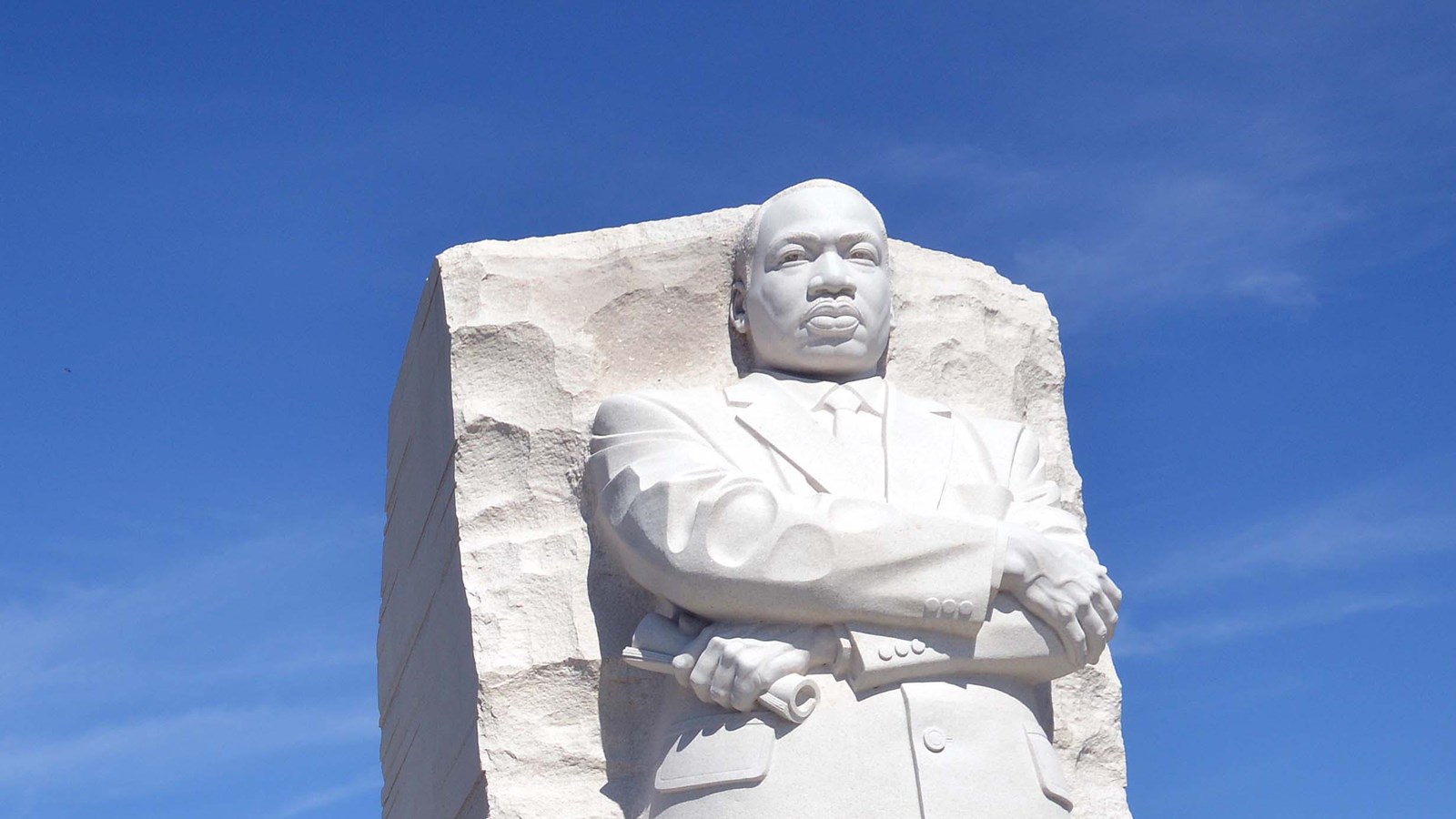Last updated: May 26, 2023
Place
Martin Luther King, Jr. Memorial

NPS / Bill Shugarts
Bus/Shuttle Stop, Historical/Interpretive Information/Exhibits, Information, Parking - Auto, Restroom, Scenic View/Photo Spot
Dr. Martin Luther King, Jr. (1929-1968) was the preeminent civil rights leader of the 1950s and '60s. King was a Baptist preacher and evangelist of nonviolent resistance. King rose to prominence through the effort to desegregate buses in Montgomery, Alabama in 1955-6 and the demonstrations in Birmingham, Alabama in 1963 where he wrote is famous "Letter from Birmingham Jail." At the height of the Civil Rights movement, King delivered his renowned "I Have a Dream" speech from the steps of the Lincoln Memorial on August 28, 1963 during the March on Washington for Jobs and Freedom. The demonstration in particular, and the larger movement in general, helped spur lawmakers to pass the Civil Rights Act of 1964 and the Voting Rights Act of 1965, ending segregation and discriminatory voting laws and practices.
King was particularly notable for his insistence on "nonviolent resistance," a strategy he developed after studying and applying the work of Henry David Thoreau, Mohandas Gandhi, and Reinhold Niebuhr, among others. King realized that non-violent resistance could only succeed "if the groups against whom the resistance was taking place had some degree of moral conscience." If all Americans could see the injustice inherent in Jim Crow laws, King believed morality would compel the nation to side with the activists.
The strategy of non-violence allowed the demonstrators to retain a clear position as victims of amoral oppression and violence. Television, photographs, and print media would allow the world to witness the drama of oppression in the South. Men, women, and children joined in the protests knowing that they could and would be jailed, injured, or even killed. The people's courage to put themselves in harm's way in the historic moment of the Civil Rights Movement was fueled by generations of blacks that King said had been "seared in the flames of withering injustice," and bolstered by faith in Dr. King's method of non-violence.
This memorial to King depicts a 30-foot carving of King on a feature called the "Stone of Hope" that is being moved out of a feature called the "Mountain of Despair," a reference to a line in the "I Have a Dream speech" called back in the inscription on the side of the statue. King is represented standing firm, resolute, and thoughtful, holding a rolled stack of papers. Quotations from speeches and writings are engraved on the arced "Inscription Wall" on the flanks of the memorial.
Books and memorabilia are available in the adjacent bookstore; head through the mountain sculpture and the building will be across the street to the left. Restrooms are also located at the bookstore, accessed from outdoors on the left side of the building.
The memorial opened in August 2011. The formal dedication was scheduled for the anniversary of the March on Washington on August 28, 2011 but was postponed to October due to a hurricane. The participants included President Barack Obama.
Inscriptions
"We shall overcome because the arc of the moral universe is long, but it bends toward justice." District of Columbia, 1968
"Darkness cannot drive out darkness, only light can do that. Hate cannot drive out hate, only love can do that." 1963
"I believe that unarmed truth and unconditional love will have the final word in reality. This is why right, temporarily defeated, is stronger that evil triumphant." Norway 1964
"Make a career of humanity. Commit yourself to the noble struggle for equal rights. You will make a greater person of yourself, a greater nation of your country, and a finer world to live in." District of Columbia, 1959
"I oppose the war in Vietnam because I love America. I speak out against it not in anger but with anxiety and sorrow in my heart, and above all with a passionate desire to see our beloved country stand as a moral example of the world." California 1967
"If we are to have peace on earth, our loyalties must become ecumenical rather than sectional. Our loyalties must transcend our race, our tribe, our class, and our nation; and this means we must develop a world perspective." Georgia 1967
"Injustice anywhere is a threat to justice everywhere. We are caught in an inescapable network of mutuality, tied in a single garment of destiny. Whatever affects one directly, affects all indirectly." Alabama 1963
"I have the audacity to believe that peoples everywhere can have three meals a day for their bodies, education and culture for their minds, and dignity, equality and freedom for their spirits." Norway 1964
"It is not enough to say 'We must not wage war.' It is necessary to love peace and sacrifice for it. We must concentrate not merely on the negative expulsion of war, but on the positive affirmation of peace." California 1967
"The ultimate measure of a man is not where he stands in moments of comfort and convenience, but where he stands at times of challenge and controversy." 1963
"Every nation must now develop an overriding loyalty to mankind as a whole in order to preserve the best in their individual societies." New York 1967
"We are determined here in Montgomery to work and fight until justice runs down like water, and righteousness like a mighty stream." Alabama 1955
"We must come to see that the end we seek is a society at peace with itself, a society that can live with its conscience." Alabama 1965
"True peace is not merely the absence of tension; it is the presence of justice." 1958
Statue (south side): "Out of the mountain of despair, a stone of hope"
Statue: (north side, in lower corner): "雷宜锌 12.30.2010"
